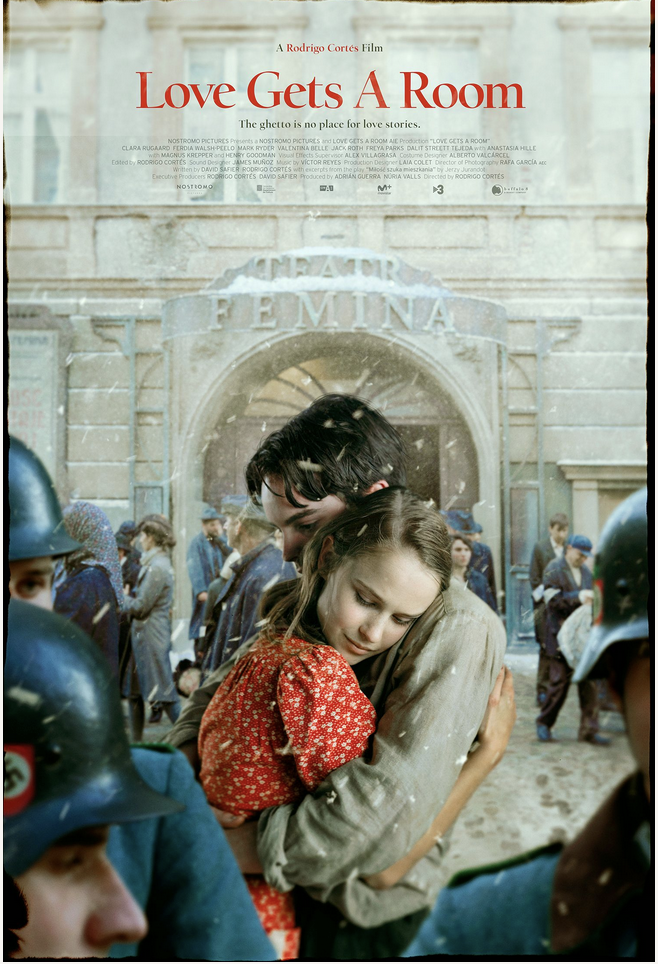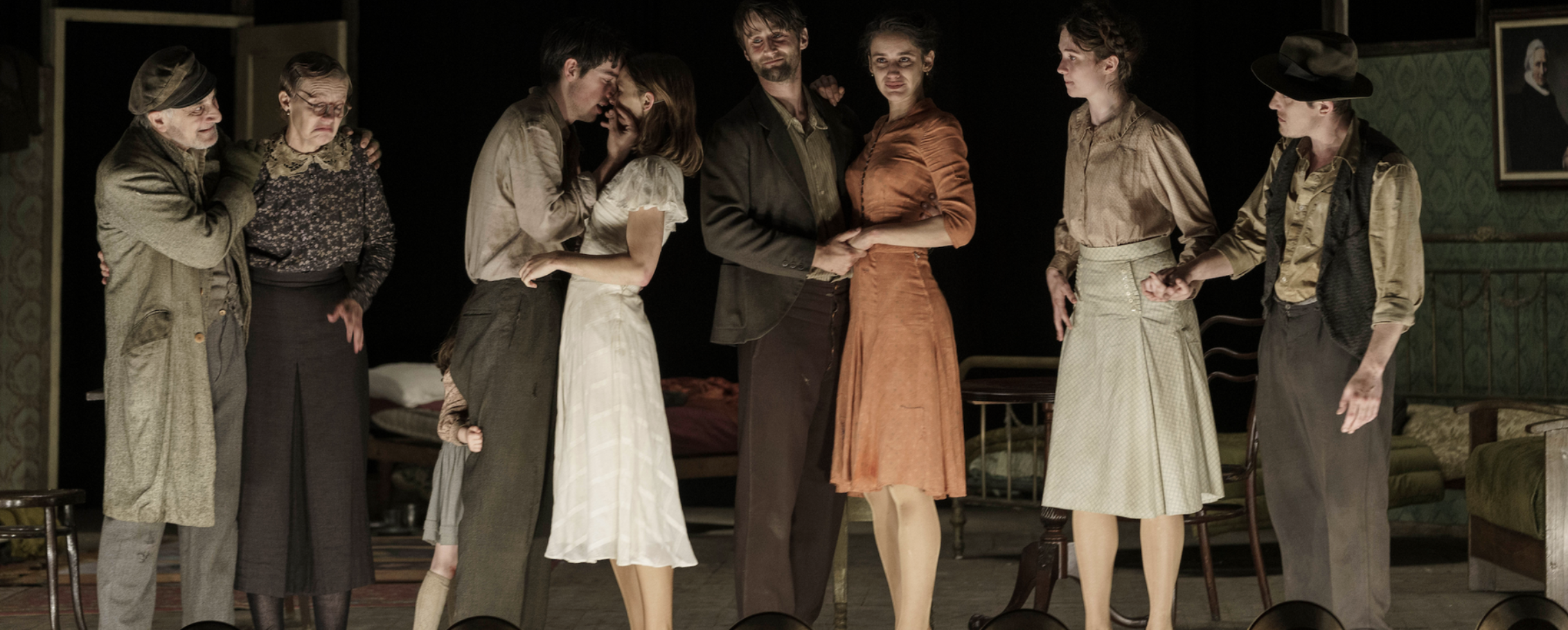Love Gets A Room – A Powerful Movie of Hope
By Sue Weston and Susan Rosenbluth – Two Sues On The Aisle
Love Gets A Room is a movie about a theater group from the Warsaw ghetto, specifically, the entanglement of the actors’ lives, both on and off the stage. It is based on the musical comedy MIŁOŚĆ SZUKA MIESZKANIA (“Love Looks for an Apartment”) written by Jerzy Jurandot and performed at the Femina Theater in the Warsaw ghetto on January 16, 1942. Jurandot, a Polish Jew, pokes fun at their situation, providing the audience strength to fight and the will to survive.
Filmmaker Rodrigo Cortés created Love Gets A Room using the original text and lyrics, but the music had been lost and was reimagined by Victor Reyes based on the late-1930s stage musical tradition. Corté envisioned the narrative on three levels, “the harsh reality of this group of actors in the ghetto, the more benevolent and stylized reality of the characters they interpret, and thirdly, the theater itself and what the spectators see from their seats.”
And it works, transporting us back in time, and space, becoming a spectator in the Warsaw ghetto. Ghetto residents constantly walked a tightrope between complying with the capricious demands of the Nazis while maintaining what was left of their dignity. Love Gets A Room is a poignant love story.
Love Gets A Room will be in select theaters including Los Angeles, Miami, Minneapolis, Seattle, and Scottsdale on June 23 with streaming beginning June 30.
Historical Context
On November 16th, 1940, every Jew in Warsaw, and tens of thousands of refugees from all over Poland were confined in a ghetto, isolated from the outside world. At its height, as many as 460,000 Jews were imprisoned in a 1.3 sq mile area. Daily life was a struggle, facing overcrowding, and epidemics. Long days spent without employment, enabled ghetto residents, authors, and artists to focus their creativity on the theater and a symphony orchestra.
The performances were a way to subtly resist, connecting the community through laughter rather than despair. Audiences, forbidden from clapping instead, stamp their feet on the floor to show appreciation.
The ghetto offered sub-human conditions with escape as the only hope. Yet leaving the ghetto was a risky, dangerous, and costly impossibility. So many people stoically held on to the hope of liberation.
The Plot
The playwright writes about what he knows, life in the ghetto, creating a musical comedy performed by a troop of actors determined to focus all their energies on bringing joy into the lives of other ghetto residents. On stage, a love triangle evolves between Stefcia (Clara Rugaard the protagonist), Patryk (Mark Ryder, ex-boyfriend), and Edmund (Ferdia Walsh-Peelo, current boyfriend). As the two newlywed couples share a single room.
This mirrors the off-stage struggle facing Stefcia, choosing between two suitors, Patryk who bribed a guard for two passages to escape the ghetto, and Edmund, her soulmate who is responsible for his young sister, Sarah (Dalit Streett Tejeda).
Stefcia’s Struggle to Survive
The movie begins with Stefcia running across the ghetto, passing through burned-out bombed buildings, stopping momentarily to hush the residents to hide from the Nazis outside. She emerges through the destroyed back wall into a public square where Germans with guns command Jews to laugh at those forced to do pushups on the cobblestones. Stefcia quickly shares a joke encouraging a woman to laugh, avoiding the gaze of passing soldiers.
Stefcia is a chameleon, on the stage life is jovial, she is a giddy newlywed, but the moment Stefcia steps off-stage she becomes a girl desperate to survive. The contrast between her personas is striking. As an actress, she wants to deliver a performance that will make the audience clap their hands. Behind the scenes, the weight of her decision is crushing. She has an opportunity to escape the ghetto but struggles with how her decision will affect those left behind.
She has to decide how much she is willing to sacrifice for love. Patryk, who never stopped loving Stefcia, is willing to risk everything to secure their escape. But Stefcia is in love with Edmond, and concerned about the wellbeing of his sister. She recognizes that the extreme price of love can involve placing others before yourself.
Blurred Reality
The music, dance, and song, of the theater, provide a temporary escape from the reality of the ghetto. In a lighthearted way, they laugh at the ridiculousness of their situation, separated from the world by only a wall, a small but impenetrable barrier. The theater is magical, transforming desperation into a delightful performance; this time, the audience is clapping. The film reminds the world of the atrocities of the Holocaust, and the strength of character that guides Stefcia to give Sarah the possibility of life.
Love Gets A Room is a captivating film, both disturbing and enjoyable. It provides insight into a seldom shared piece of history, life in the Warsaw ghetto. This might be one of humanity’s low points masterfully framed in the film that shows goodness and love, an indication that kindness can always find a way to exist.
******
Two Sues on the Aisle bases its ratings on how many challahs (1-5) it pays to buy (rather than make) in order to see the play, show, film, book, or exhibit being reviewed.
Love Gets A Room received Four Challah
Runtime: 1 Hour and 43 Minutes










